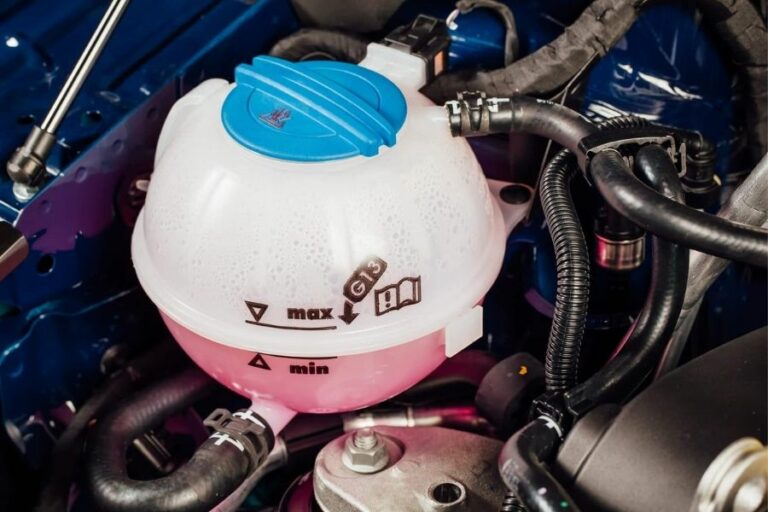Dipstick Not Showing Oil But Engine Has Oil: What to Do?
Keeping an eye on the oil levels of the car is necessary for smooth driving. A dipstick is a mandatory tool for checking the oil levels in the engine. It is long enough to get to the bottom of the engine and lets you know how much oil is present inside the engine.
Even though you are aware that there should be oil, the dipstick shows no oil. So, we’ll learn what to do in a situation when the dipstick does not show oil but the engine has oil.
Reasons Why the Dipstick is Not Showing Oil When the Engine Has Oil
A functional dipstick is a long tool that is inserted into the combustion engine to measure the oil level.
Even when the engine has an adequate amount of oil, the dipstick might not show the oil at all. There could be a few reasons for this issue and they are listed below:
- Low engine oil level
- Not changing the oil for some time
- Oil leaks in the engine tank
- Increased oil consumption of the engine
- Faulty head gasket
- Incorrect or too hot oil temperature
- Worn out and damaged valve seals
- Cracked engine body
- Blocked oil hoses
What to Do If the Dipstick is Not Showing Oil But the Engine Has Oil?
Now that you are aware of the possible reasons for the dipstick not showing oil when the engine has oil, it’s time to do something about it.
We will go through each of the intricate details of the issues and how you can get rid of it. Follow these methods in order to be free from this problem:
1. Check For Low Oil Level
The most common reason for the dipstick not showing oil is the insufficient amount of oil in the engine. The dipstick can only reach to the top two quarts of the engine oil tank.
In such circumstances, even if there is oil below this level, the dipstick can’t reach it. So, it doesn’t show any oil.
Low oil levels can be due to the fact that you haven’t changed the oil in a while. Different types of engines possess different engine oil capacity.
If you don’t put in the right amount of oil in the engine, it won’t be sufficient for the dipstick to detect it.
The best and sure way of avoiding this issue is checking the engine oil level every morning or before driving. Make it a habit of checking the oil level every time you start the engine.
During oil change, put in the proper amount of oil in the engine as the engine oil capacity instructs.
Make sure the oil level gets up to the top quarts of the tank. This way, you won’t have dry dipstick issues anymore.
Read Also: Tip Of Oil Dipstick Broke Off
2. Look For Oil Leaks
The oil in the engine could be leaking due to two reasons-
- Faulty or defective valve seals
- Crack in the engine body due to regular wear and tear
Because of these, the oil leaks out no matter how much oil you put into the engine. As a result, the dipstick also fails to reach the oil at this rate. Depending on the leakage rate, the oil in the engine will empty out faster every time.
Fixing the oil leaks as soon as possible is the only way to get rid of this problem. Thoroughly inspect the engine for any possible leaks, whether it is small or big.
Repair the oil leaks following appropriate instructions. You may take the help of a professional for this oil leak repair to perfectly finish it.
3. Examine the Gasket For Extra Oil Consumption
Oil losses or extra oil consumption occurs from faulty engine parts. For instance, a defective head gasket can be at fault for it.
Between the cylinder head and engine block, the head gasket is supposed to create an essential seal.
A faulty head gasket will fail to create this seal. The created seal could be broken or damaged beyond repair. As a result, the engine will consume more oil to function properly.
This will finish the oil in the engine faster than you imagined, leaving the dipstick dry and without oil.
Make sure no parts in the engine are damaged or defective. Inspect the health of the seal created by the gasket.
If the head gasket is broken, remove it from the engine and replace it with a new, well functioning head gasket.
Read Also: How to Read Transmission Fluid Dipstick Hot Cold
4. Wait For the Correct Oil Temperature
Another reason for the dipstick not showing oil is measuring the oil level at the wrong oil temperature. The result of the dipstick is heavily dependent on the temperature at which the reading was taken.
The oil does not stick to the dipstick at operating hot temperatures. It is more readily adhered when the oil temperature is cold. Room temperature or cooler temperature is perfect for the dipstick oil level measurement.
If you take the reading right after driving, the hot oil will flow away from the dipstick and fail to show the oil level.
In order to avoid this ordeal, let the car cool down for 15-30 minutes before taking the dipstick reading. Refrain from taking the measurement when the oil is still too hot.
Wait for the oil level to cool down to the room temperature first. You can also take it to a colder space to cool it down and get the most accurate measurement from the dipstick.
5. Use the Correct Method With the Dipstick
A lot of the time, not knowing how to properly use the dipstick in order to measure oil level is the reason for this issue.
If you don’t follow the proper method while using the dipstick, it won’t show an accurate result. Therefore, the dipstick will come up empty without any oil.
Firstly, make sure the car is parked on a flat surface. Wait 15 minutes before using the dipstick.
From the left side of the engine, remove the dipstick and clean it. Insert the dipstick into the engine and take it out to measure the oil level now.
Read Also: Is It Normal to Have Bubbles on Oil Dipstick? [Disclosed]
How to Check For Oil Without the Dipstick?
Using a dipstick to check the oil level is often considered to be an old method at present. There are other easier and advanced ways of checking oil levels without the dipstick.
This knowledge will come in handy when you realize that your particular car doesn’t include a dipstick.
So, follow these steps if you can’t find a dipstick with your car to check the oil levels:
- Check the temperature of the oil. You can use a thermometer or scanning tool to measure the oil temperature.
- Make sure the temperature is between 185-194 degrees before starting.
- Check if the car has an automatic transmission method.
- Locate the drain and fill plugs under the car and remove them.
- Connect a filling adapter to a vacuum regulator in this hole.
- Adjust the air inside the regulator until it is 100 psi.
- Locate the inspection plug and remove it carefully. Use gloves and drain pan to avoid getting everything messy.
- If the oil starts to overflow from the inspection plug, the oil level is overfilled.
- If you see no oil upon the removal, there is not enough oil inside. Refill the engine with oil until you see the oil from the top.
- Plug in the inspection plug and fill plug once you are done.
- If you notice dirty or black oil coming out, it means the oil needs a change.
Read Also: Engine Oil Dipstick Hard To Read! Here’s What You Need To Do
Risks of Driving With a Dipstick Not Showing Oil
When the dipstick does not show oil, it means that engine may not have the appropriate level of oil .
Therefore, the oil level in the combustion engine is way too low. Such circumstances create a huge risk for everyone involved in the car and the car’s health itself.
Following risks are associated with driving with a dipstick not showing oil:
Excessive Mechanical Wear
Oil in the engine creates a lubrication inside the engine to prevent the mechanical parts inside from grinding on each other.
All of those metal components will lack the proper lubrication with low oil in the engine. Hence, the metals will start to come in contact with each other and grind together.
Chunks and shavings of metal will fall from the metal components. These will create excessive damage on the engine parts. The extra wear and tear will reduce the engine efficiency and engine performance.
The engine will fail to perform at its fullest and increase chances of malfunctioning. This kind of situation can result in various types of accidents.
Heat Damage to the Engine
When the dipstick doesn’t show oil, the engine could be overheating due to less oil in the tank.
The increased friction between the components and inability to transfer heat via adequate oil leads to higher temperature. Excessive heat is very detrimental to the health of the engine.
The heat can warp the internal components of the engine out of shape. As a result, they can stop functioning properly.
This creates more damages such as fluid cross contamination, cylinder compression loss, internal cracks. These engine problems can even lead to fire.
Engine Failure
Sooner or later, the effects of the dipstick not showing oil will escalate. It can go to such an extent where the entire engine fails to function and needs a replacement.
The overall performance of the engine downgrades fast due to the heat and wear. You will start to experience knocking of the engine eventually.
There will be smoke coming out of the engine which is also harmful to the environment. The acceleration and braking capacities decrease greatly. Eventually, the engine will face total failure.
Read Also: Why Does Engine Oil Turn Black So Fast
FAQs.
You might have more questions about the dipstick not showing oil when the engine has oil. We are here to answer your most wanted questions for your convenience.
How much oil should be on the dipstick?
The oil level should be in between the marked ‘low’ or ‘full’ on the dipstick. Sometimes, there are patterns instead of such markers. In that case, the oil level should be until the middle of the patterns.
Is it safe to drive without dipstick showing oil?
Yes. it is safe to drive when the dipstick is not showing oil under a few conditions. There should be no oil leaks and debris accumulation in the engine. It is safe as long as the oil doesn’t completely run out.
How long does it take for oil to show up on the dipstick?
Depending on the circumstances, it can take from 5 to 30 minutes for the oil to show up on the dipstick. At the correct temperature and oil viscosity, wait at least 5 minutes before checking the dipstick.
How often should I check the oil level with the dipstick?
You should definitely check the oil level with the dipstick every time you get an oil change. Other than that, checking it once in a couple of weeks and before a long drive is a good practice.






